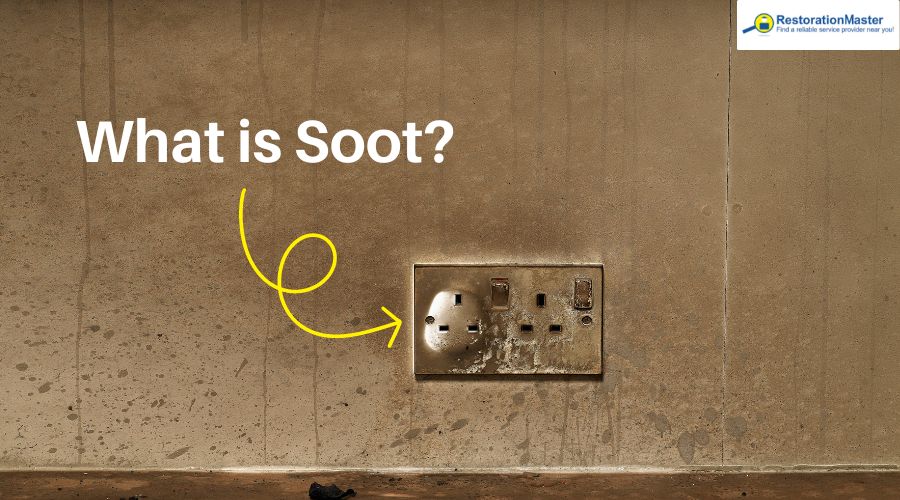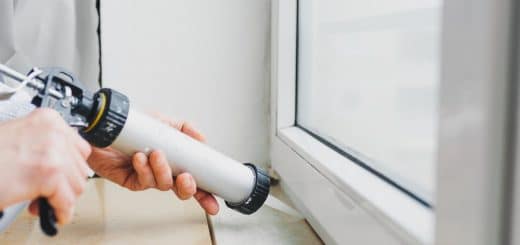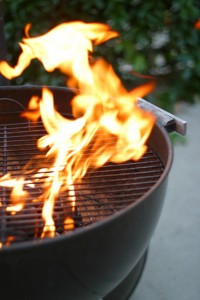What is Soot and Why Is it Dangerous?
What is Soot?
Fine, black particles known as soot accumulate where a fire has blazed. Any combustion source can yield soot. When organic, carbon-filled materials burn, some of it burns incompletely. The result of the incomplete burning of such materials, like wood, plastic, coal, and oils, is soot.
Soot contains innumerable toxic chemical compounds, like arsenic, chromium, and cadmium. The black and brownish powder is also composed of various elements, including sulfur dioxide, methane, formaldehyde, and carbon monoxide.
Tinier than sand granules, soot particles are also, in comparison, just one-third of the diameter of a single human hair. Even dust particles are larger that soot particles. Given the extremely minute size of soot particles, dangers lurk, especially when humans are exposed to soot.
Where Soot is Most Common?
Chimney sweeps are most at risk of conditions caused by exposure to soot. Other areas that have frequent contact with soot include brick masons, heating service personnel and even horticulturalists. Anyone who works in an environment where organic matter is burned is exposed to soot.
Why Soot is Dangerous?
Although the aforementioned occupations are most exposed to soot, typical homeowners are also likely to come into contact with this toxic element. Soot is frequently found in areas inhabited by humans, like household fireplaces, basement furnaces, and engine exhaust. The miniscule nature of soot particles makes health hazards a likelihood.
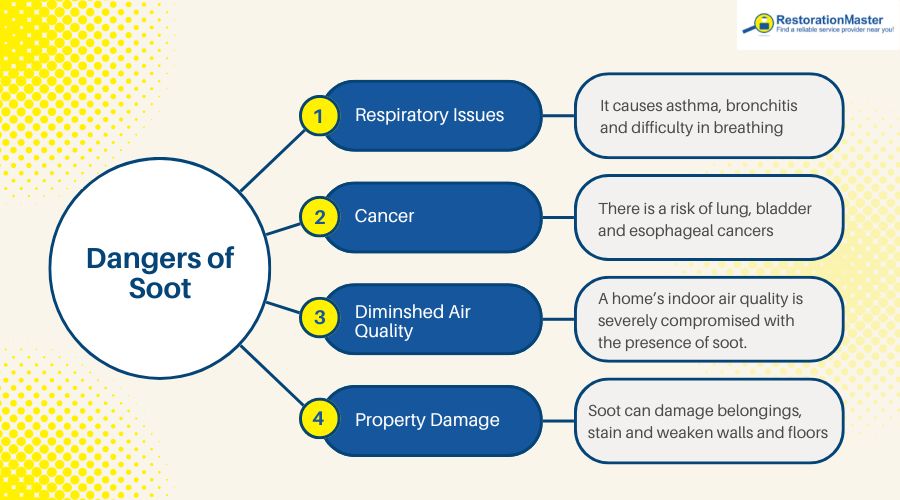
Below includes a list of effects caused by soot:
- Respiratory problems
- Cancer
- Premature deaths
- Decreased air quality
- Property damage
- High cost of cleanup
1. Respiratory Problems
The presence of soot in a home leads to respiratory conditions. A home’s occupants are likely to breathe in the tiny soot particles that are eventually embedded deep into the lung cavities. The prolonged exposure to soot unleashes a host of breathing problems, including asthma. Bronchitis is also a likely consequence. Respiratory infections are no stranger to those frequently exposed to soot.
2. Cancers
Records since the 18th century indicate a higher presence of skin cancer among chimney sweeps. Studies done since then have also discovered the predominant risk of lung, bladder and esophageal cancers in chimney sweeps as opposed to other areas.
3. Premature Deaths
Breathing in soot over a prolonged period of time is linked to early deaths. In the United States, an estimated 20,000 people die as a consequence of inhaling soot particles. Diseases caused by soot are the primary cause of death in these individuals.
4. Decreased Air Quality
A home’s indoor air quality is severely compromised with the presence of soot. Homeowners who burn candles or incense frequently in the home are likely to experience indoor air pollution. Candles, especially paraffin candles, emit soot steadily into the environment, where the particles cling to walls and ceilings. Fireplaces with inadequate ventilation also lead to soot accumulations inside the home.
5. Property Damage
Aside from health concerns associated with soot inside the home, the belongings within the residence undergo damage. Electronics, especially, are ruined by soot particles. Since smoke and its byproduct soot contain metallic particles, electronics short circuit when the soot lodges inside the device. The acidic nature of soot also corrodes the metal parts contained within technological devices.
With soot being extremely acidic, any contact with paint inside the home discolors the surface. If soot particles are left over a prolonged period of time on painted surfaces, the paint coating will eventually soften and take a turn for the worse.
Draperies, walls, carpets and upholstery undergo significant damage when the soot particles infiltrate deep into the materials. The longer these household goods are left untreated, the more challenging it will be to restore.
Floors and carpeting may be permanently damaged by soot and will require a replacement. Soot will cause ceilings to transform into a blackened mess. A through cleanup process is necessary.
6. High Cost of Cleanup
The harmful consequences of soot are disastrous to homeowners. Soot can be cleaned up; however, soot cleanup should be done professionally, especially if it is caused by a fire. Homeowners can expect to spend between $2,000 and $6,000 to professionally clean up soot in the aftermath of a fire. In addition, the home’s AC filters and air ducts should be cleaned to prevent soot from appearing in the future inside the home.
Many homeowners’ insurance policies will cover the cost of damage that results from a house fire and its byproducts: soot, smoke and ash. When filing an insurance claim after a fire, document any and all soot damage caused by the fire.
What to Do After Finding Soot
When faced with the consequences of a fire, contact the most reputable fire damage restoration company, RestorationMaster. Technicians from RestorationMaster recognize the dangers of soot in the home and provide rapid fire and smoke damage restoration services.
Our skilled professionals use chemical cleaners and high-tech equipment to salvage the home’s contents. We also offer pack-out services to ensure the safe handling of your belongings. Heavily damaged homes benefit from our board-up services, which secure the property and prevent further damage. Additionally, our fire damage restoration specialists are experienced in rebuilding structures destroyed by fires, helping restore your home to its former condition.
Immediate Steps to Take After a Fire
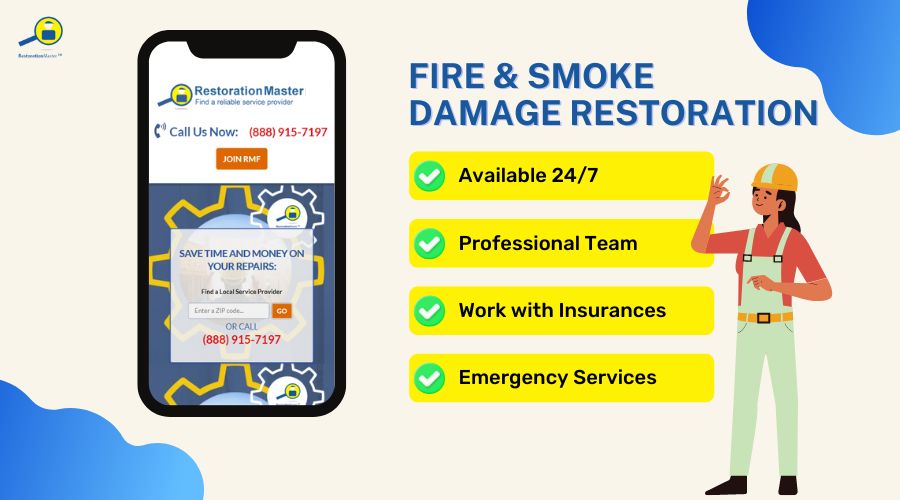
The team at RestorationMaster will arrive onsite quickly after the initial call. In the meantime, homeowners should not use electrical devices until they are inspected by a professional and deemed safe to use. Using the air conditioner and furnace should also be avoided in the interim. Homeowners should not attempt to clean soot off surfaces such as drywall, furniture, wood, and similar porous materials; instead, leave this task to the professionals.
An immediate call for fire damage restoration services is critical. Soot and smoke damage spread quickly even after a fire is put out. Discoloration and corrosion to a property can be permanent if swift action is not taken to properly restore the items.
Frequently Asked Questions
What Causes Soot Buildup in the Heat Exchanger and Vent?
Soot can build up in your heat exchanger and vents for several reasons:
- Fuel that doesn’t burn fully creates soot. This can happen if there’s too little air or dirty burners.
- If your ventilation isn’t working properly, soot can accumulate.
- When burners are clogged or dirty, they produce more soot.
- If there’s too much fuel, it can lead to incomplete burning and soot.
- Cracks or leaks in the heat exchanger can cause soot to build up.
- Incorrect or Skipped maintenance can lead to soot problems.
What Color is Soot?
Soot is typically black, although it can sometimes appear dark gray. Its color comes from the carbon particles produced during incomplete combustion of fuel. The black appearance is a result of the high carbon content in soot.
How to get rid of soot smell in the house?
Soot in the house typically has a strong, unpleasant odor that resembles burnt material. It often smells like acrid smoke or a lingering, ashy scent that can be quite overpowering. Here’s how you can get rid of that lingering soot smell:
- Open windows and doors to let fresh air in and help clear out the odor.
- Wipe down walls, ceilings, and other surfaces with a mix of water and mild soap.
- Sprinkle baking soda on carpets and upholstery. Let it sit for a few hours, then vacuum it up to help absorb the smell.
- Wash curtains, pillowcases, and other washable fabrics in hot water with a strong detergent.
- Place bowls of activated charcoal around your home to help absorb the odor.
- Run air purifiers with HEPA filters to help remove soot particles and odors from the air.
- Call RestorationMaster for professional help










